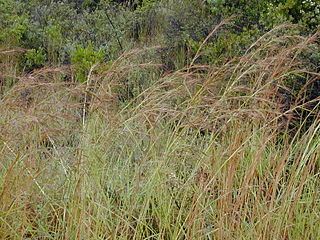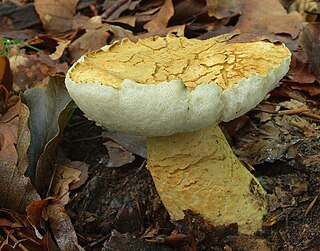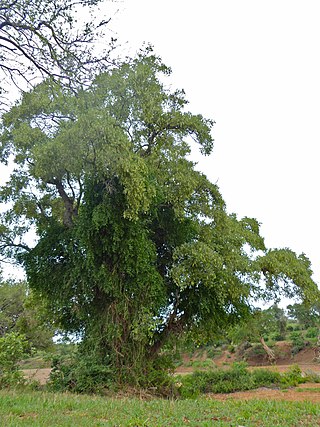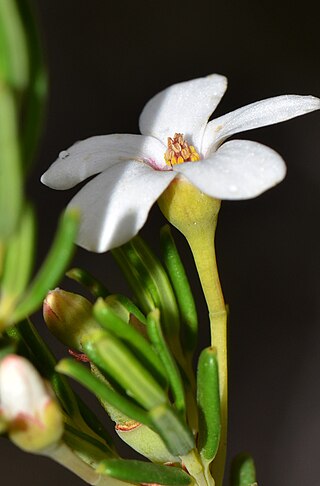
Psilocybe cyanescens is a species of potent psychedelic mushroom. The main compounds responsible for its psychedelic effects are psilocybin and psilocin. It belongs to the family Hymenogastraceae. A formal description of the species was published by Elsie Wakefield in 1946 in the Transactions of the British Mycological Society, based on a specimen she had recently collected at Kew Gardens. She had begun collecting the species as early as 1910. The mushroom is not generally regarded as being physically dangerous to adults. Since all the psychoactive compounds in P. cyanescens are water-soluble, the fruiting bodies can be rendered non-psychoactive through parboiling, allowing their culinary use. However, since most people find them overly bitter and they are too small to have great nutritive value, this is not frequently done.

Panaeolus is a genus of small, black-spored, saprotrophic agarics. The word Panaeolus is Greek for "all variegated", alluding to the spotted gills of the mushrooms produced.
Rain tree is a common name for several plants and may refer to:

Panaeolus cyanescens is a mushroom in the Bolbitiaceae family. Panaeolus cyanescens is a common psychoactive mushroom and is similar to Panaeolus tropicalis.

Panaeolus bisporus, also known as Copelandia bisporus is a rare and widely distributed little brown mushroom that bruises blue and contains the hallucinogen psilocybin.
Philenoptera kanurii, synonym Lonchocarpus kanurii, is a species of legume in the family Fabaceae. It is native to Kenya and Somalia. It is threatened by habitat loss.

Hyparrhenia is a genus of grasses. Many species are known commonly as thatching grass.

South Africa, officially the Republic of South Africa, is the southernmost country in Africa. It is bounded to the south by 2,798 kilometres (1,739 mi) of coastline that stretches along the South Atlantic and Indian Oceans; to the north by the neighbouring countries of Namibia, Botswana, and Zimbabwe; and to the east and northeast by Mozambique and Eswatini. It also completely enclaves the country Lesotho. It is the southernmost country on the mainland of the Old World, and the second-most populous country located entirely south of the equator, after Tanzania. South Africa is a biodiversity hotspot, with unique biomes, plant and animal life. With over 60 million people, the country is the world's 24th-most populous nation and covers an area of 1,221,037 square kilometres. Pretoria is the administrative capital, while Cape Town, as the seat of Parliament, is the legislative capital. Bloemfontein has traditionally been regarded as the judicial capital. The largest city, and site of highest court is Johannesburg.

Salvia cyanescens is a perennial shrub in the Lamiaceae family. It is native to Iran and Turkey, and was introduced to horticulture in 1959. It freely hybridizes in its native habitat with Salvia candidissima.
Philenoptera laxiflora, synonym Lonchocarpus laxiflorus, is a species of legume in the family Fabaceae. The tree grows to 4–8 meters in height, has grey or yellowish bark and compound leaves. New leaves are accompanied by purple flowers on multi-branched panicles. The fruit is a glabrous papery pod, usually containing one seed. Ph. laxiflorus is widely distributed in West Africa, Central Africa, the African Great Lakes, and Northeast Africa. It is found in savanna woodlands and dry forested areas, particularly fringing forest near water courses.

The tribe Millettieae is one of the subdivisions of the plant family Fabaceae.

Gyroporus cyanescens, commonly known as the bluing bolete or the cornflower bolete, is a species of bolete fungus in the family Gyroporaceae. First described from France in 1788, the species is found in Asia, Australia, Europe, and eastern North America, where it grows on the ground in coniferous and mixed forests.

Psilocybe allenii is a species of agaric fungus in the family Hymenogastraceae. Described as new to science in 2012, it is named after John W. Allen, who provided the type collection. It is found in the northwestern North America from British Columbia, Canada to Los Angeles, California, most commonly within 10 miles (16 km) of the Pacific coast.

Philenoptera is a flowering plant genus in the family Fabaceae.

Philenoptera violacea known also as apple leaf or rain tree, Afrikaans: Appelblaar, Sotho: Mphata, Tsonga: Mohata, Zulu: Isihomohomo, IsiNdebele: Ichithamuzi, Idungamuzi, Iphanda) is a plant species in the legume family (Fabaceae).
Haniffia is a genus of plants in the ginger family, Zingiberaceae. It has 3 known species, native to Thailand and to Peninsular Malaysia.
Plants of the World Online (POWO) is an online database published by the Royal Botanic Gardens, Kew. It was launched in March 2017 with the ultimate aim being "to enable users to access information on all the world's known seed-bearing plants by 2020". The initial focus was on tropical African Floras, particularly Flora Zambesiaca, Flora of West Tropical Africa and Flora of Tropical East Africa.
Walter Carl Otto Busse was a German botanist, whose primary scholarly focus was on German agriculture and the plants, fungi and lichen of Africa.
Haniffia cyanescens is a monocotyledonous plant species that was first described by Henry Nicholas Ridley, and got its current name from Richard Eric Holttum. Haniffia cyanescens is part of the genus Haniffia and the family Zingiberaceae. It is an endangered species which is confined to Peninsular Malaysia.

Ricinocarpos cyanescens is a species of flowering plant in the family Euphorbiaceae and is endemic to the south-west of Western Australia. It is a compact, monoecious shrub with narrowly oblong leaves and male and female flowers arranged singly or in small groups.












